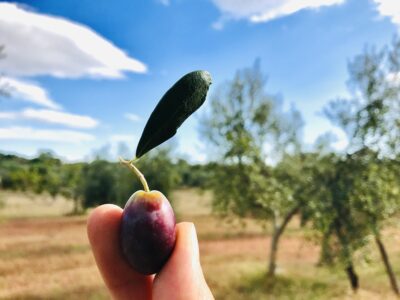When tasting the oil, many of us often experience a strong bitter, pungent and sometimes even spicy sensation on the palate. Some consumers avoid this intense taste because it is not appreciated or often confused with a defect in olive oil. In reality, the explanation of the bitterness in some oils is more scientifically founded than ever and far from beliefs and falsehoods.
In fact, olive oil, among its various constituents, has minor components among which phenolic compounds stand out. Phenolic compounds, divided into simple and complex, are mostly represented by polyphenols and secoiridoids. In particular, two compounds, oleuropein and oleocanthal, will give the oil its characteristic pungent taste.
These polyphenols are mostly present in olives that have just turned ripe, in a healthy and fresh fruit and tend to disappear in very ripe olives. Here is how a quality harvested at the right time and in the correct way can be decisive for the final oil. In fact, polyphenols are powerful antioxidants that protect the oil from oxidation.
However, the presence of these components in the oil is independent of various factors, including the variety of olive trees. In fact, it is known to the most typical Apulian varieties such as Coratina always gives an oil with a more intense taste, compared to Leccino from which a more delicate oil is obtained.
Other contributing elements are agronomic factors, the hygienic and sanitary condition of the raw material and its storage. In fact, the olives delivered to the mill must be pressed within 24 hours to ensure the nutritional quality of the oil.
The method of oil extraction also participates in the lesser or greater presence of polyphenols in the final product. This is why it is strongly recommended to extract cold, with a centrifugation process. In this way we will preserve the polyphenols which will carry out their antioxidant action and delay oxidation.
Consuming a quality oil rich in polyphenols is also good for our health. In fact, polyphenols exert their antioxidant action also inside our body, protecting us from the onset of free radicals, vascular lacerations, the onset of tumors and cellular aging. It also helps us to keep cholesterol levels stable, avoiding the rise of bad LDL cholesterol.









